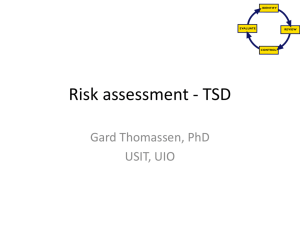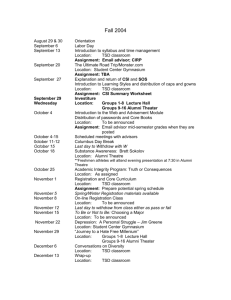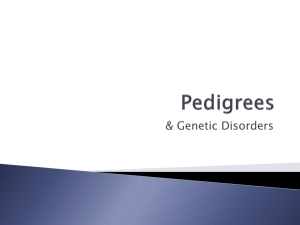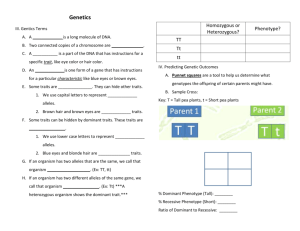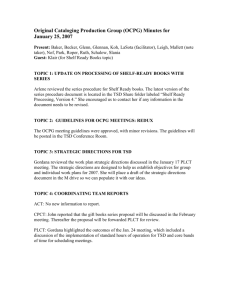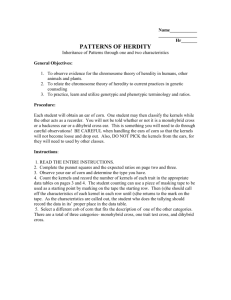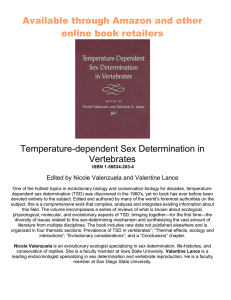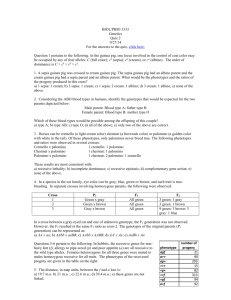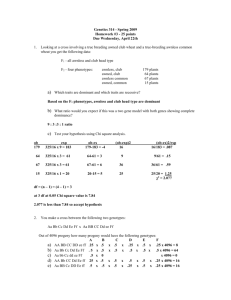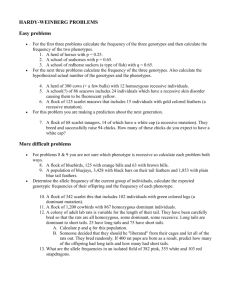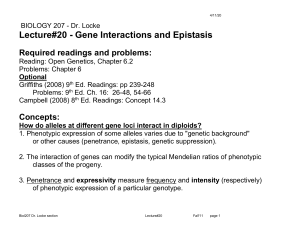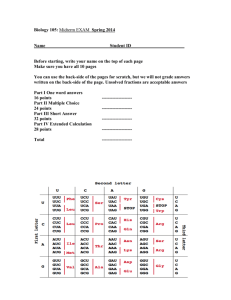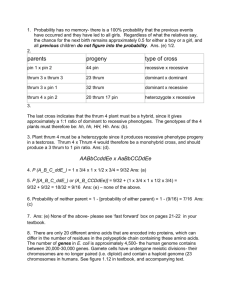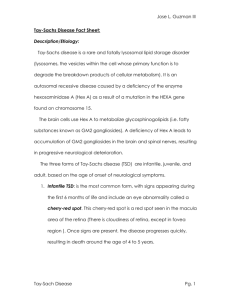Quiz 1
advertisement
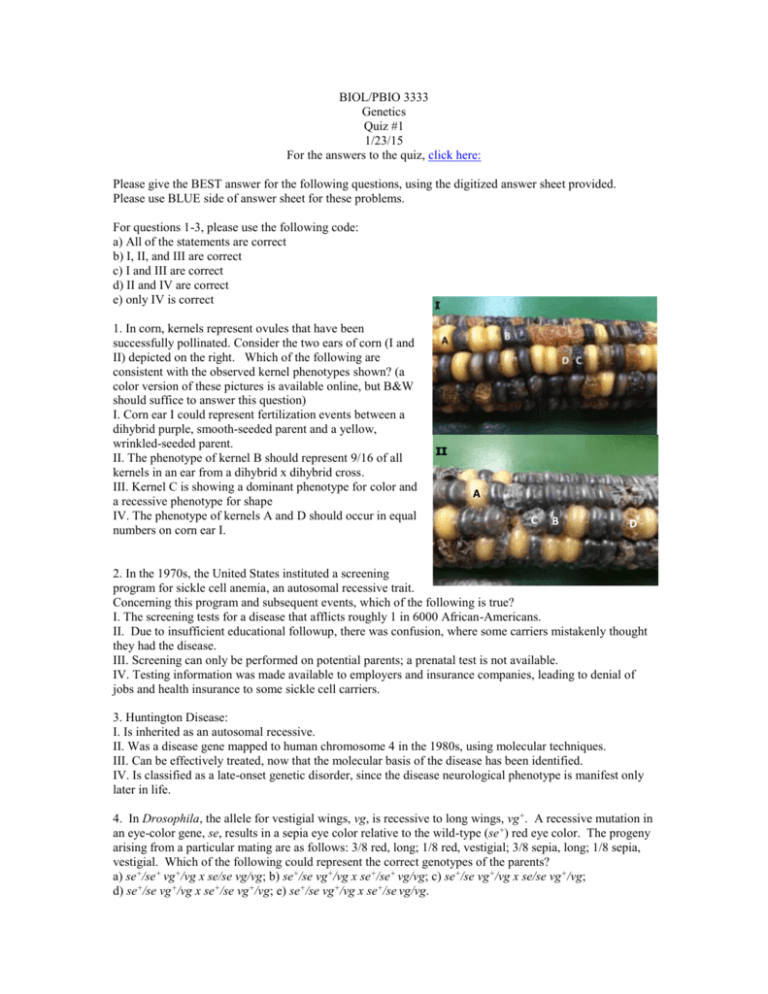
BIOL/PBIO 3333 Genetics Quiz #1 1/23/15 For the answers to the quiz, click here: Please give the BEST answer for the following questions, using the digitized answer sheet provided. Please use BLUE side of answer sheet for these problems. For questions 1-3, please use the following code: a) All of the statements are correct b) I, II, and III are correct c) I and III are correct d) II and IV are correct e) only IV is correct 1. In corn, kernels represent ovules that have been successfully pollinated. Consider the two ears of corn (I and II) depicted on the right. Which of the following are consistent with the observed kernel phenotypes shown? (a color version of these pictures is available online, but B&W should suffice to answer this question) I. Corn ear I could represent fertilization events between a dihybrid purple, smooth-seeded parent and a yellow, wrinkled-seeded parent. II. The phenotype of kernel B should represent 9/16 of all kernels in an ear from a dihybrid x dihybrid cross. III. Kernel C is showing a dominant phenotype for color and a recessive phenotype for shape IV. The phenotype of kernels A and D should occur in equal numbers on corn ear I. 2. In the 1970s, the United States instituted a screening program for sickle cell anemia, an autosomal recessive trait. Concerning this program and subsequent events, which of the following is true? I. The screening tests for a disease that afflicts roughly 1 in 6000 African-Americans. II. Due to insufficient educational followup, there was confusion, where some carriers mistakenly thought they had the disease. III. Screening can only be performed on potential parents; a prenatal test is not available. IV. Testing information was made available to employers and insurance companies, leading to denial of jobs and health insurance to some sickle cell carriers. 3. Huntington Disease: I. Is inherited as an autosomal recessive. II. Was a disease gene mapped to human chromosome 4 in the 1980s, using molecular techniques. III. Can be effectively treated, now that the molecular basis of the disease has been identified. IV. Is classified as a late-onset genetic disorder, since the disease neurological phenotype is manifest only later in life. 4. In Drosophila, the allele for vestigial wings, vg, is recessive to long wings, vg+. A recessive mutation in an eye-color gene, se, results in a sepia eye color relative to the wild-type (se+) red eye color. The progeny arising from a particular mating are as follows: 3/8 red, long; 1/8 red, vestigial; 3/8 sepia, long; 1/8 sepia, vestigial. Which of the following could represent the correct genotypes of the parents? a) se+/se+ vg+/vg x se/se vg/vg; b) se+/se vg+/vg x se+/se+ vg/vg; c) se+/se vg+/vg x se/se vg+/vg; d) se+/se vg+/vg x se+/se vg+/vg; e) se+/se vg+/vg x se+/se vg/vg. 5. If the parents of a family already have two boys, what is the probability that the next two offspring will be girls? a) 1; b) ½; c) 1/3; d) ¼; e) 1/8. Consider the following cross, where all the gene loci in question show simple Mendelian patterns of inheritance and can be considered to assort independently of one another: AaBbCcDdEeff x aaBbccDdEEFf 6. What fraction of the possible progeny will phenotypically resemble the first parent? a) 9/32; b) 27/64; c) 27/128; d) 81/128; e) none of the above. 7. What fraction of the possible progeny will genotypically resemble the first parent? a) 1/256; b) 1/64; c) 9/128; d) 27/128; e) none of the above. 8. For the genes in question, how many different types of gametes can be produced by the first parent? a) 4; b) 8; c) 32; d) 64; e) 128. Questions 9 and 10 pertain to the following. Tay-Sachs disease (TSD) is an autosomal recessive disorder that leads to neurological deterioration and death, often in infancy. You are a genetic counselor interviewing a phenotypically normal couple with a history of disease in their families. The husband had a male first cousin on his mothers’s side who died from TSD, and his wife had a paternal aunt with TSD. There are no other known cases, and none of the matings have been between related individuals. Assume that the trait is very rare. 9. What are the odds that the husband is a carrier of TSD? a) ¼; b) 1/3; c) ½; d) 2/3; e) none of the above. 10. What is the probability that a child born to this couple would be affected with TSD? a) 1/9; b) 1/18; c) 1/36; d) 1/48; e) none of the above.
